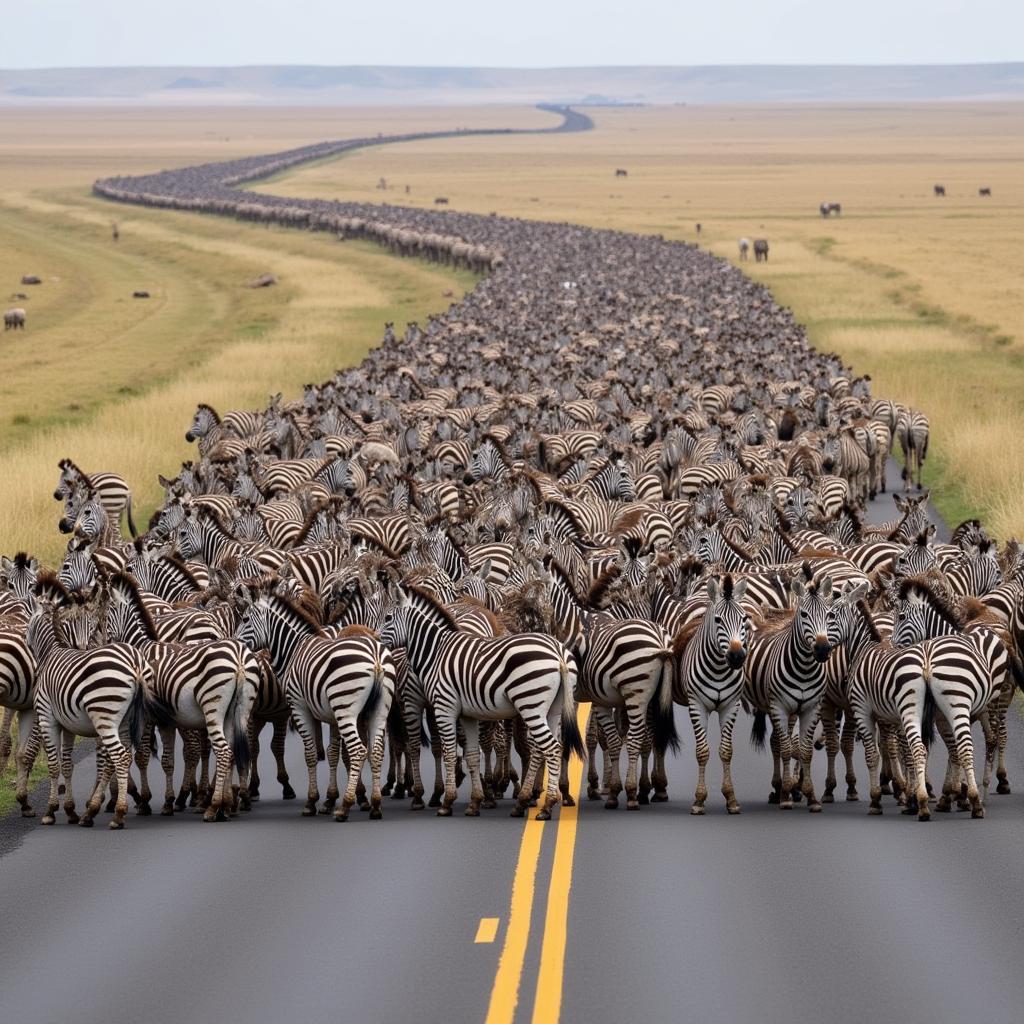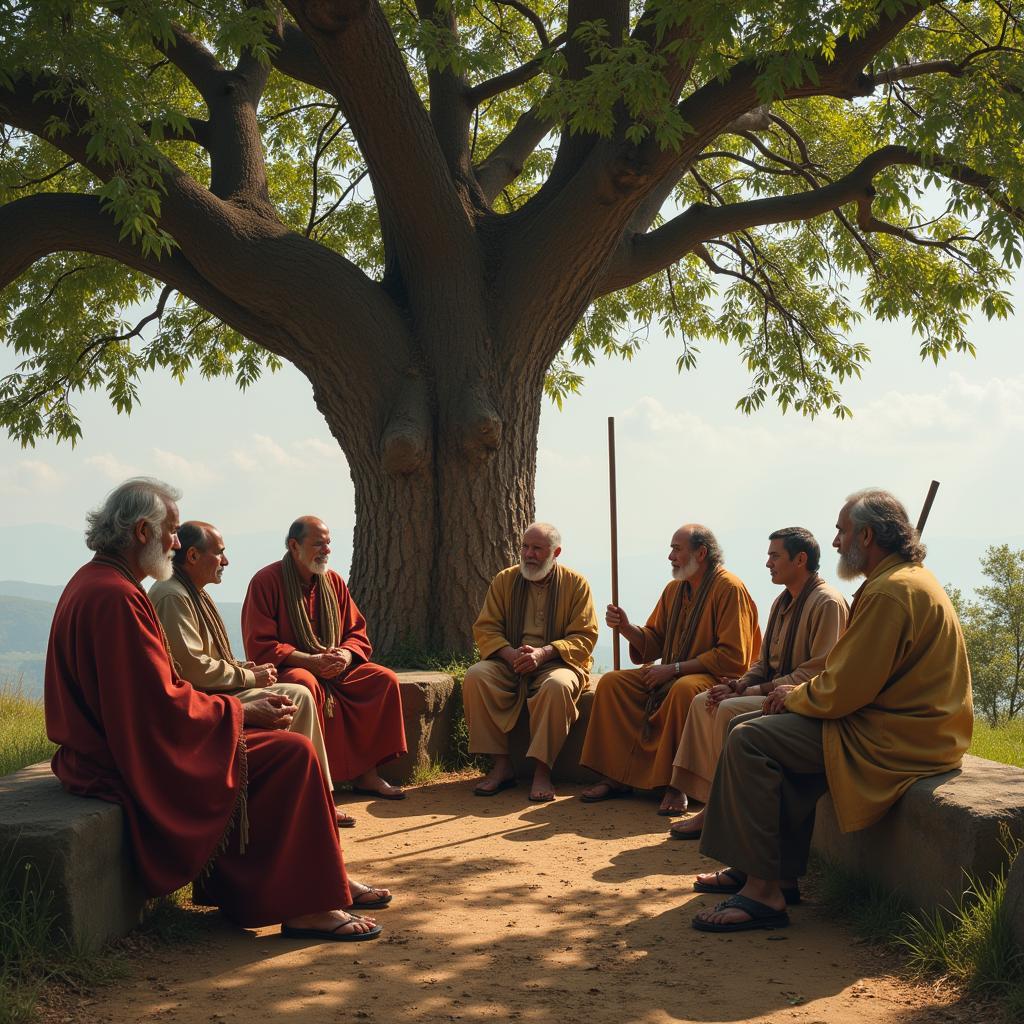African Animals Crossing Road: A Sight to Behold and a Call for Conservation
Imagine driving across the vast savannas of Africa, the sun casting long shadows on the golden grasslands, when suddenly, a majestic elephant family emerges from the bush, slowly making their way across the road. This is not an uncommon sight in many parts of Africa, where wildlife and humans often share the same spaces.
 African elephants crossing a road in a national park
African elephants crossing a road in a national park
Why Do Animals Cross the Road in Africa?
The answer is not always as simple as “to get to the other side”. While it might seem humorous, the reasons behind animals crossing roads in Africa are often rooted in their basic needs:
- Food and Water: Seasonal migrations are a common occurrence in Africa, driven by the availability of food and water. Animals like zebras, wildebeest, and elephants often traverse vast distances, crossing roads in their path, to reach greener pastures and water sources.
- Mating: During mating seasons, animals are on the move to find partners. This can lead to increased crossings, as seen with elephants during the “musth” period, when males exhibit heightened testosterone levels and roam widely seeking mates.
- Territory: Some animals, like lions and cheetahs, have large territories that they patrol regularly. Roads might cut through these territories, leading to frequent crossings.
 Zebras crossing a road during their annual migration
Zebras crossing a road during their annual migration
The Importance of Wildlife Corridors
As human populations grow and infrastructure expands, it is increasingly important to consider the impact on wildlife. Roads, while necessary for human development, can fragment animal habitats and create barriers to their natural movement.
Wildlife corridors are areas of natural habitat that connect fragmented ecosystems, allowing animals to move freely between them. These corridors are essential for:
- Maintaining Genetic Diversity: By facilitating movement between different populations, corridors prevent inbreeding and ensure the health and resilience of species.
- Reducing Human-Wildlife Conflict: When animals are unable to access resources due to barriers like roads, they may venture closer to human settlements, leading to conflict.
- Boosting Tourism: Wildlife crossings and corridors can become tourist attractions in themselves, offering visitors unique opportunities to observe animals in their natural habitat.
How You Can Help
- Drive with Caution: When driving in areas known for wildlife, be alert, drive slowly, and be prepared to stop for animals crossing the road.
- Support Conservation Efforts: Many organizations work to protect wildlife and establish corridors. Consider supporting them through donations or volunteering.
- Spread Awareness: Share your experiences and knowledge about the importance of wildlife conservation with others.
By understanding the reasons behind animals crossing roads in Africa and supporting initiatives that mitigate the impact of human development on wildlife, we can help ensure that these incredible creatures continue to thrive for generations to come.

